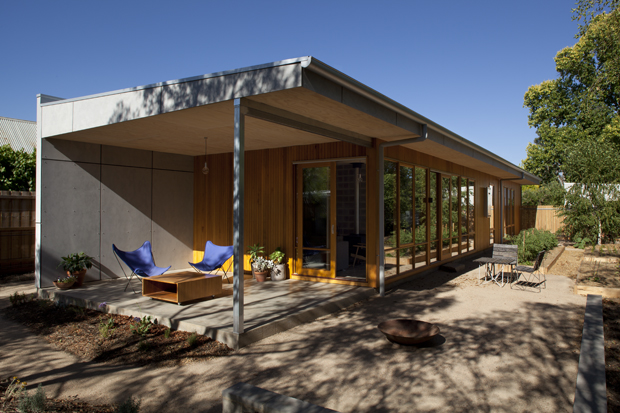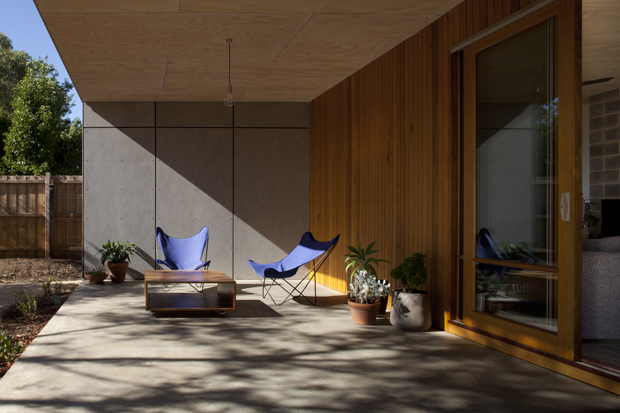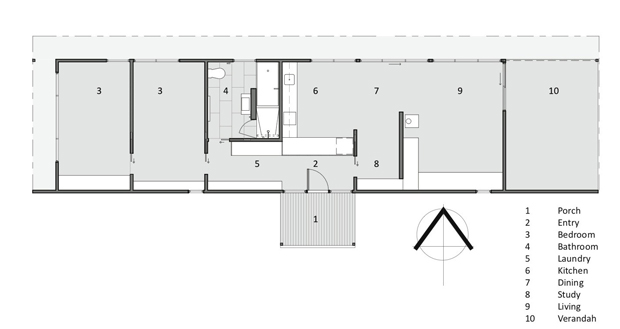Leaving a small energy footprint is important, but LiFEHOUSE 2.2 goes one step further to show that it is possible to create a house with excellent environmental credentials without breaking the bank.
It is this winning combination of resource and energy efficiency and affordability that helped Lifehouse Design clinch the Single Dwelling (New) Award at the 2013 BPN Sustainability Awards.
Creating a house on a relatively low budget is not an uncommon scenario for many builders and architects in Australia. With LiFEHOUSE 2.2, all design decisions were made in accordance to keeping building and construction costs as low as possible.
For instance, materials that needed a low level of finish or no further finishing at all were chosen, while all furniture was recycled and re-used, or bought second-hand.

The concrete pavers were also second-hand, and the compost bins made from the timber pallets that the pavers were delivered on. Most of the new products were selected for their longevity and reusability.
At the same time, conceiving a modular design was important for the designers, who wanted the end product to be easily replicated on a variety of sites, and modified in specific ways to suit a myriad of client briefs and contexts.
This ability to repeat the house's design in various locations not only ensures accessibility to products and systems, but also that less waste is produced during the construction process.

At only 109 square metres, the house is located in Castlemaine/Cambells Creek, Victoria, which can experience wide climatic extremes.
To maintain a moderate internal climate throughout the year, rigorous passive-solar design principles have been applied. This includes a northern orientation, high insulation levels, a strategic eave design and high thermal mass, which contribute to reduced energy needs.
On top of these strategies, the household’s water supply is provided by three 5,000 litre and one 1,500 litre water tanks, plumbed as dual supply with mains water. A 2.2kW grid-interactive solar system provides approximately three quarters of the occupants’ power needs.
“Challenging the accepted paradigms of project home design, this residence does not just feature sustainable initiatives, but embodies the values of sustainable living,” the judges commented when picking the winner.
“Affordable, simple and high-quality, Lifehouse 2.2 is a true model for low cost sustainability.”

Consideration of the embodied energy of materials used, coupled with life-cycle assessment and reusability, have led this house to exceed the 6.0 Stars requirement for new dwellings, and obtain a commendable FirstRate5 HERS of 8 Stars.
Photography by Brendan Finn, folded bird photo
+2013+winner%3a+LiFEHOUSE+2.2+by+Lifehouse+Design+%7c+Architecture+%26+Design&pu=/awards-1/2013-bpn-sustainability-awards-winners/2013-bpn-awards-single-dwelling-new-winner-lifehou&pt=_Article)
+2013+winner%3a+LiFEHOUSE+2.2+by+Lifehouse+Design+%7c+Architecture+%26+Design&pu=/awards-1/2013-bpn-sustainability-awards-winners/2013-bpn-awards-single-dwelling-new-winner-lifehou&pt=_Article)